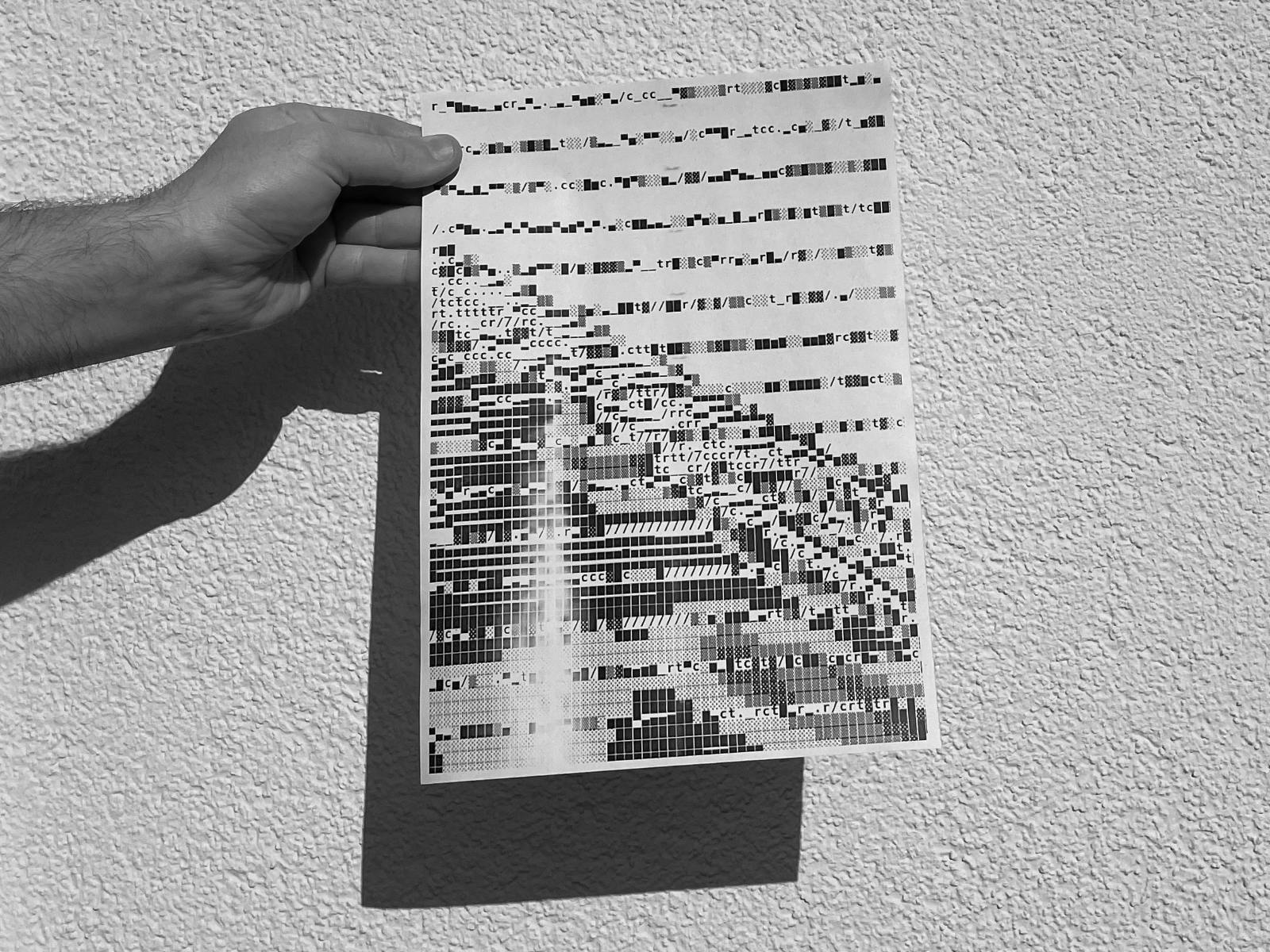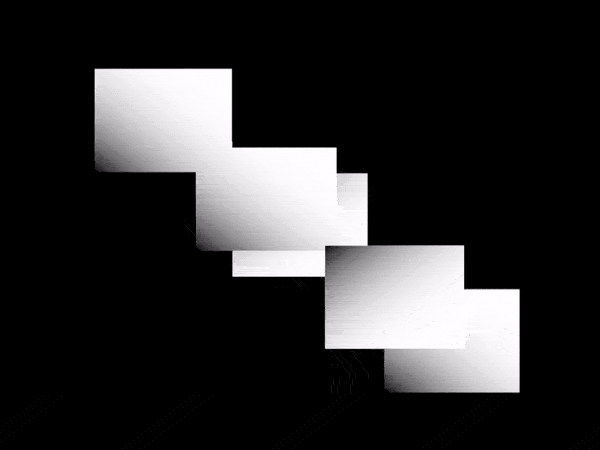Studio visit: Julian Hespenheide
Two thousand and twenty-four. At the “Barceloneta” metro station, a few hundred meters from the beach, stands an old dot-matrix display, made of red LEDs, showing informations about arriving trains in Catalan language. It looks like it’s fallen out of time: A faulty area flickers in the middle, a glitch that distorts the text in an interesting way. I find this screen strangely beautiful, intuitively take out my phone, record a video and post it on Instagram. The story receives dozens of likes and comments within a short time. It seems to me that in some way this dot-matrix display is honest: It does not try to appear as non-technical, It does not try to persuade, it’s just what it is: A grid of LED lamps displaying text information.
Months later, I meet the German creative technologist, artist and educator Julian Hespenheide with whom I share this fascination for simple technology. Entering his basement studio, I find him surrounded by transparent boxes full of cables, circuit boards and all kinds of low-resolution displays. We spend a whole day together, exchanging ideas and thoughts.

Dear Julian, it was an absolute pleasure to meet you in Berlin and spend a day in your studio. Let’s kick off this interview with an introduction. Please tell us about you and your work.
Hey Tim! Absolutely. It was really great finally meeting you in real life. I am really glad you took your time to come to Berlin, since I always feel like it’s hard for me to leave the city when it’s not work, family or vacation related.
My name is Julian and I am a digital designer with a specialization in new media, interaction design and physical computing. I have been working in these fields now for more than a decade: From developing physical prototypes for startups; working more classical design jobs, such as branding campaigns, identities with agencies; freelancing web developer jobs to building more complex and large-scale installations for internationally known artists, museums and galleries. I feel like a digital all-rounder or generalist and I am quite happy with the way I am now. For a few years now, I have been going solo again, and the experience has been very nice so far! I have had an obsession with the smallest details for years (untreated OCD?) but in my digital works, mostly the artistic ones, I have started quite early to look at single bits, pieces, fragments and pixels. Where others are taking off nowadays, sometimes in a rush or hurry to generate the perfect AI-generated short movie, I am just looking at small pixels and the digital medium itself and want people to understand: This matters; probably even more than you think.
In my work you’ll see me working mostly with ASCII or rather PETSCII, the Commodore 64 flavored ASCII character set, to build visuals that are very much open for interpretation. I have taken a few liberties on how to handle PETSCII, but mostly I am modernizing something that has been gone for a long time and give it a second life through modern technologies, eg. faster frame rates, bigger resolutions or running it directly on microcontrollers with various old displays attached.
I mainly use Processing and p5.js when working on jobs or my artistic project and when I need to do anything with hardware, then the obvious choice is Arduino, the counter-part of Processing.
In your studio in Berlin Moabit I was enchanted by the drawers full of little circuit boards, cables, microprocessors and minicomputers. You also introduced me to some of your installation works that are built with these tiny pieces of hardware. What fascinates you about hardware?
Oh yes. I think this is indeed the most beautiful part of my studio: the playground. Like every tinkerer out there, I have lots and loads of little things sprinkled throughout and all over my work place. It’s a living collection that I am actively expanding, with selected parts and an archive of old pieces from my study days. I am always actively trying to use old parts in new projects, so nothing should go to waste, but I am also constantly looking for new and exciting parts.

To get to your question: I think what I find so very mesmerizing about hardware is that it offers me a tangible surface of the digital subface of an algorithm.
To find new and exciting forms for something that is inherently just made up of a bunch of binary numbers is a crazy thought I would have never thought before my studies. I had good professors that showed us many beautiful and hand-picked references, but also how to anchor new and fleeting thoughts with some theory and then there was a lot of engagement in my study group and the university itself. I think that’s where I caught fire: If you set your mind to it, you can build whatever you want with the simplest means. With a good eye and some deft fingers, you can throw in a beautiful hardware installation together in no time.
Again to answer your question: I think it’s the interplay of physics and electronics, the digital and the analogue, the problem-solving in a very hands-on manner (literally) and the problem-solving within some program that you have written. There are so many aspects to it and it’s been a constant joyride for me ever since.
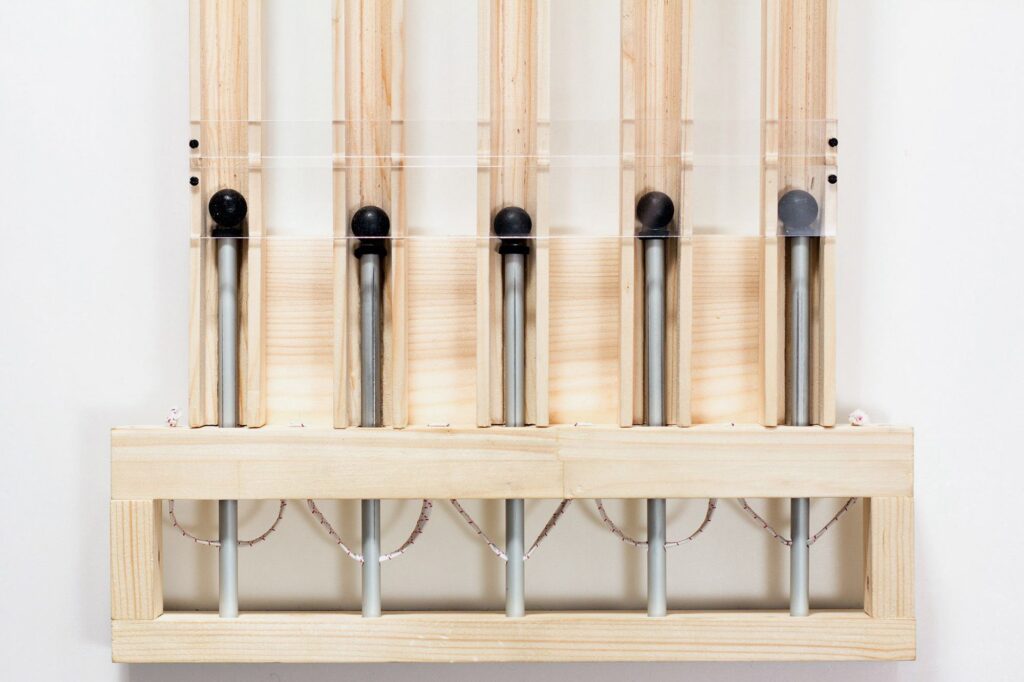
When you hear the term “Creative Coding”, what does it mean for you?
For me the term of Creative Coding is somehow still new. From 2009 until 2016, I preferred using terms such as “Generative Design,” “Computational Design,” or “Physical Computing” to describe very specific areas with some approach to how code can be used there. Over the years, I would occasionally hear the term mentioned here and there. However, it was only when I received my first teaching assignment in 2019 for industrial design students at the University in Magdeburg-Stendal (Germany) that I encountered the true scope of what creative coding could encompass. It exceeded my imagination.
Since then I have thought about the term more than once, taught it at different universities and talked about it in different contexts but always with the same idea:
Creative coding for me is the liberation from the standard. For me, it’s thinking with code bottom-up, building simple tools to explore an idea and iterate everything in crazy ways.
Like every other designer or artist you pick your material: Some may pick wood, others metal, but I have started to form these thoughts around code as the material of my choice. It’s malleable while writing it, brittle and can fall apart if handled wrongly and can become hard when turned into a version or release. It’s almost like a non-newtonian fluid that becomes super hard when you exert too much pressure on it and super soft when approached gently. I’d say that’s my general feeling around creative coding and the aforementioned hardware, as can be seen in the area of physical computing, is not a means to the end but just a temporary shell for the code to be tangible in the real world.



Do you consider yourself an artist or a designer?
Love that question! I would always consider myself as a designer although there are many people who may disagree with me, sometimes quite vocally and I also have that Master of the Arts degree, so what am I? I don’t feel like it’s up to me to decide whether I am an artist or not, but the job of a viewer, collector, gallerist, curator, guest, average enjoyer etc. to give an assessment.
It may seem that I work and present myself as an artist, but that could also be just the symptoms of my education in effect.
As a designer with a huge affinity for technology, I just love to explore things and I always like to bring these explorations to different projects: Client-jobs, commissions or self-initiated projects. I am still trying to find a balance between exploration and expression and just problem-solving, so I can see some conflict between the eternal question of “Art is for emotion” while “Design is for solving problems”. The question could also be opened: Is someone who is very clever at writing AI prompts an artist, an engineer, or a copywriter?
(Un-)fortunately, it’s always in the eye of the beholder.
How does your creative process look like?
This may depend on what the context is and I am just realizing this is the perfect jump off point to talk about this for a second: Creative processes always happen in some context.
It’s the embedding and the everything “around” the process. Being under stress, time or money-wise, sets up a different context and therefore influences the creative process also completely different: faster and sharper decisions, fewer iterations but with – ideally or hopefully – more intention.
In a self-initiated project, my creative process looks way much wilder than in a commercial context, because it is usually driven by either something I found or saw somewhere – in a book; on the internet; on the street – and then I am just trying to find new ways to either express it or look at it from different angles. Iterating over the same thing several times until it’s depleted or “played out” is the best thing I could imagine.


For example, I could talk about my current obsession with bits and data, that has started somewhere towards the end of my bachelor studies and seeped over into my master’s studies: I’ve looked at data from many points of view. Tried to do data visualizations, wrap data in physical objects that you can touch (Tether 2013 / émile 2015), started to conceive narratives around algorithms (The Assembly 2014) and build worlds that were half rooted (no pun intended) in speculative design and cybernetics (M.A. Thesis: Biotic Explorers Research Group), where I was sending primitive bit-signals through a fungal network. After trying all of these different things with data, and having the feeling that each project would bring me a little bit forward, I’ve embraced the digital medium itself and kicked out “data” and just concentrated on the “bits” part. This is the current iteration I am going through for a few years already and I feel like within this “big loop” I have started to spin into smaller iterations.
Almost like in a nested for-loop structure, where for every big round you round several smaller rounds, the feeling of my artistic context is: How can we understand the medium by itself without all the ornaments and decorations?
Point is: Always consider what is the context in which you want to create something. Surround yourself with beautiful and interesting things and it’s most likely that the same or better thing may come out of you.
What does technological limitation mean to you?
This might sound funny at first, but technological limitation to me is anti-consumerist at best: Do companies hold back their inventions to turn more profit each cycle? How many billion people out there have the most advanced technology on them just for scrolling through Instagram and sending funny emojis on WhatsApp? Those devices are technically unlimited in every sense, yet no one takes the time to use them to any of their respective extents.
Limitations for me personally are mainly two things: first, it is a meditation of what is in front of you and how you can you use it and secondly a box to grow. I feel it might be part of our (German) culture, and although I am very curious about new things, I try to approach everything slowly, steadily and with care. The American ethos of “move fast and break things” in tech is something I could never get behind. I’d rather build something up, well within my limitations and see if my system is tickling the given limits.
If it doesn’t: That’s good! There is room to expand, grow and see where a metaphorical limit is and if I do reach a limit: That’s also good! Because now I can see opportunities for optimization. Faster algorithm or a complete rethink of the whole thing? Will it also shrink again because of optimizations? These are challenges that may only come up, when you go all the way and find out all the breakpoints. It’s like the demo scene back in the days, where Demosceners would try to compress the most jaw-dropping demos into the smallest code.
For the other aspect of technological limitation, the part with meditation, I would like to mention: Things have started to move fast. Very fast. One day we have 256×256 pixel neural network outputs that don’t resemble anything, and the next minute we can generate short-films and full audio podcasts at will.
The double-exponential development of technology might feel good to some, but I’d rather take my time and see what is possible within the given technology at any time. For example, in my works I am focussing on rather retro technology that has only a very niche following nowadays and try to give it a second life. Why? Even back then, some of these technologies only existed for a year or two, mostly because of economic reasons or lack of interest. Extending the lifespan of these technologies just a little bit longer and find out what they could’ve been with the knowledge that we have today is an exciting thought.
Artificial Intelligence, as unlimited as it is, doesn’t give me that excitement, looks most of the time very lifeless to me and it is quite hard on the border of: We invented AI to write pretty poems and draw cute pictures, so I have more time to take care of my laundry. It should be the other way around, right?
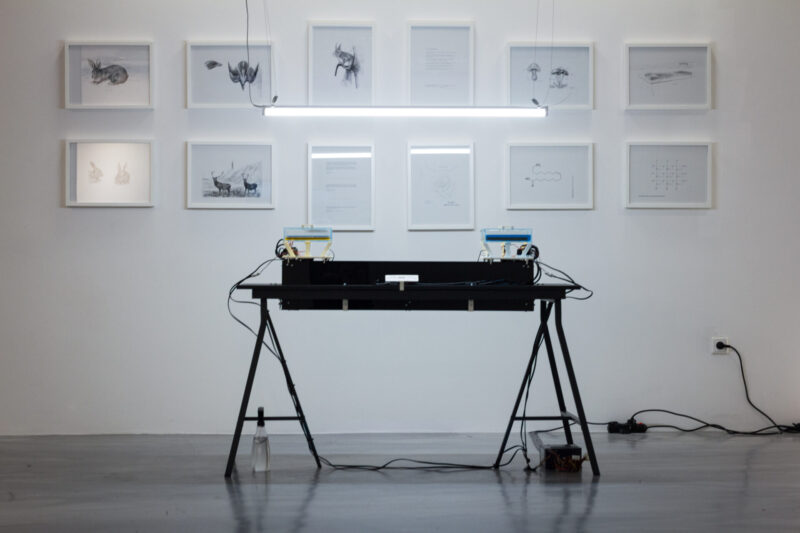


How do you approach learning?
I am a huge advocate of self-learning since for myself the best channel to learn something is by doing it myself, doing the mistakes, taking notes for the future and then doing it better. I like to dive deep into topics, if they are part of bigger picture I am interested in, and really try to take in the whole “landscape” of the topic: This means going wide, into even the wildest and obscure corner of that specific topic. This is a move that many may do, because essentially I feel this could be coupled with FOMO, the fear of missing out a specific thing within a topic, but for me it’s just to make sure I have seen the things at least once and I am not bound to repeat someone else’s mistakes or take away from their success.
Next thing is: building. By building small modules and creating brief experiments, I am applying what I have learned. It’s in a way your typical homework that you would get in school or university: Apply what you have learned to something trivial, just to get it running.
And what do you get from running small experiments? Joy! A rush. Dopamine. You made something work, so you get more invested.
That basically describes my learning spiral, where I am always starting at the lowest complexity, the smallest thing and try to get everything out of it in various ways.
For a lot of young folks out there it may seem, that learning is really hard nowadays: There is a lot of information on the internet and it is also so highly condensed: Courses on platforms try to teach you how to “design your own first furniture in just 10 courses” or “become a master of coding in 4 hours”. That is, of course, all just marketing, because I feel learning is a philosophy that you have to adapt for yourself and you adapt it for life. Learning to learn is an excellent skill to have and, for me, at least, it’s also always a very humbling experience.
Many people of older generations said one day: Now I am done with learning, from here on I am going to earn money.
For me this sounds like a quick path to bitterness, because in our world there is so much knowledge and one can learn every day: from your environment, from interacting or listening to friends, foes and strangers.
There is just no quick route to learning something. For the young people, I usually just say: Find a curated source. That can be a wonderful book that helps you to train your attention span, since that is all messed thanks to decades of media use and instant gratification, or talk to experts. Interview those experts, they are everywhere: Your professors, that one friend that works in a design agency and is seeing the craziest things every day or write an e-mail to someone you admire on the internet and just ask them a couple of questions. You’ll be surprised how much these people have to say and how valuable this can be for your own learning.
And for anyone a bit older: Don’t give up on learning. You can always re-start again, just take it slow and one step at a time. It’s too early to become bitter now because you cannot understand this or that.




You were learning from one of the pioneers of computational art, Frieder Nake, who was your professor and whose work I highly admire. Can you tell us what you have learned from him?
Learning with Frieder was a great experience. Class was never boring and it pretty much felt like you were tapping into history. Being able to learn with and from one of the pioneers of generative art was a huge honor, which I did not realize in my earlier years. There are many things he was teaching us: the ways of communism (no joke) but also to just stick around. This was a direct criticism of the newly established bologna system: Bachelor / Master degrees in favor of the highly regarded german diploma. His point was that students may only stick around for three years in art school and then may leave again pursuing their own careers. I think he identified it as a problem right away, since then he could not get to know his students and could not build up a proper professor-student relationship and also follow them along or guide them on their journeys through their university years. Because of him, I tried to study as long as I can and try to take as much as I could from my art school context.
In some classes, we had the chance to go over his and his peers’ generative algorithms. Discuss them: The what, why, how and when? This was interesting, because this also opened up our minds to thinking like how they (the pioneers) were working back in the days: on paper or just visualizing things in their mind. The machine, the computer and the algorithms we design for them are merely tools. Quite often, our task was to imagine the output instead of drawing it. Give it some plasticity with our minds. I really liked those exercises, since you are basically asked to daydream for a bit and get to stare a hole into the wall.
This helped me later a lot, to filter my thoughts and try to pre-visualize whatever I needed to do, for example: If I needed to write some code to I tried to imagine all the things I wanted to do with it, but then started to break it down into those easier to digest chunks of code. One could now argue: That’s just top-down / bottom-up thinking. It is, in a way, but it also has that extra flavor of going over some of the steps a couple more times and put them into a scenario: Is everything I am doing really that necessary? Back in the days, Frieder and his colleagues had limited Rechenzeit (computation time). Consequently, in order to run their programs and to draw their images, they would have to apply for fundings – sometimes even go as far as faking their affiliation with a university in order to compute and ultimately create something! Computation time was rare, so it was very important to have things ready in your mind and on paper. Also you’d have to debug your code on paper, so writing clean code that a human can understand was a basic necessity.
Today it is not the Rechenzeit that is really limited anymore, but our own time. Everything around us demands our attention, so splitting, dividing and distributing time for projects is sometimes very difficult. I have learned that in order to learn or create something, you rather just need to make time.
On that other thought: Students nowadays only get to spend a little time with their educators and most often are the educators overworked, too, so even the little time you have with them does not equal to quality time.
That’s a bit sad, because of icons like Frieder, who took their time to spend time with us, we got to know a different era where things might have been a little bit harder in terms of computing, but the excitement to run your code after hours or days of working on it must have felt incredible!
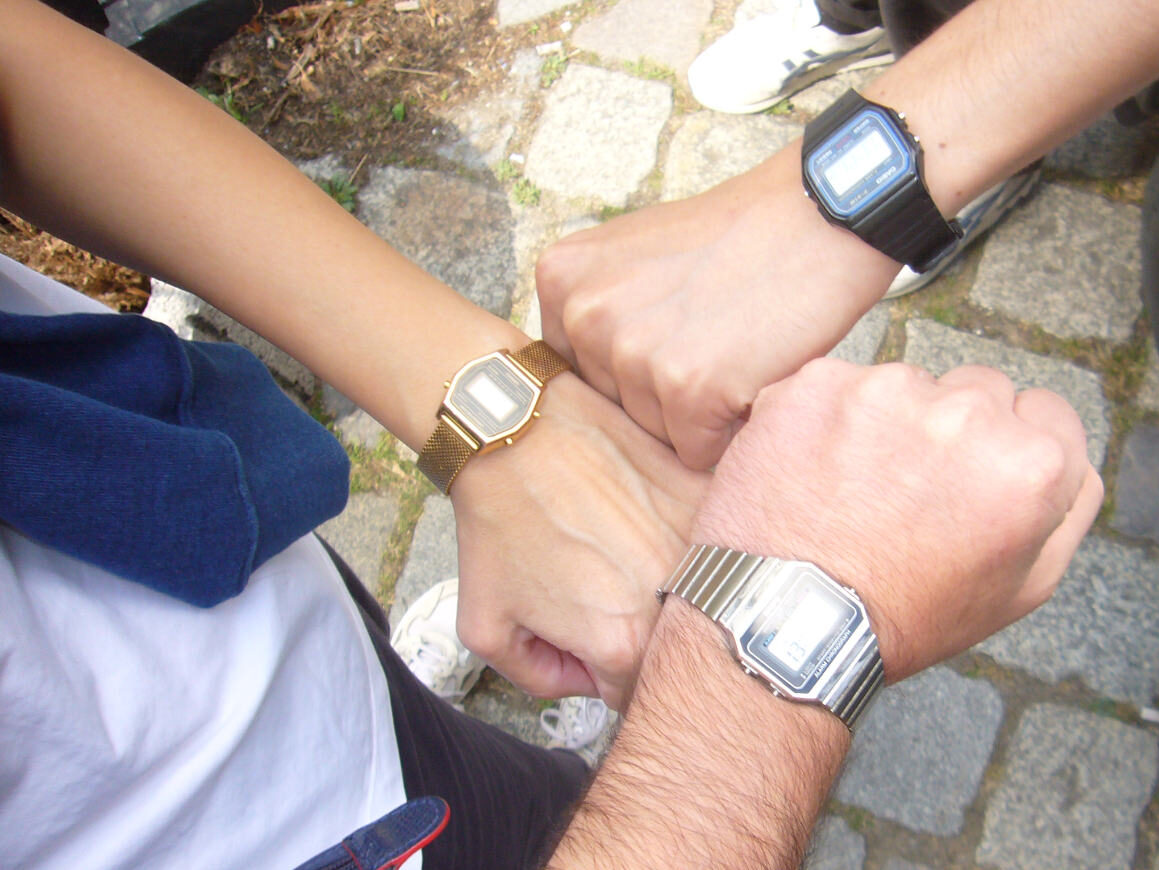
What’s next for you? Any upcoming adventures you wanna share?
Oh Tim, you know me. I am always on multiple things, all well within my niche. Of course, I am continuing my teaching career, may even finally expand into online courses.
What may be a bit more tangible is the fact that I am finally trying to launch a catalogue, where people can directly purchase art from me. The things you can expect will range from traditional posters, some wearable art, like text mode (to German readers: again, no pun intended) scarfs to adore or wear to more experimental things like generative controllers and displays. These are the things I like to create and also pour my heart, brain and soul into.
Outside of building that catalogue, I am exploring ways of making the digital more tangible by building more physical installations again. Since the new media boom of the early 2010s, it became quite silent in the space, but I am trying to bring some of that old flavor back with some new installations. One book I have been obsessed for years is Flatland and I am trying to bring different parts of that book alive. In 2023, I released a project called FSM, which was partially capturing parts and features of Flatland but also paid in a way an homage to another great digital art project called Terraforms. Currently, I am looking into different ways of examining and exhibiting different parts of that book.
Also, currently I am running a gallery in Berlin-Mitte with my dear friend Anna Lucia. It is a very time limited project and may only run until spring next year. This adventure is already in full swing and on its own way since June 2024 and the artists we are trying to show are, for now, all Berlin-based. Why? As an artist in Berlin, it’s really hard to find a space and when you find a space, it’s hard to get people to it on the day of the vernissage. Sometimes these places are in very weird locations, like in the backhouse, down two stairs into a dinky basement or in other cases, it’s just very far out. This gallery we are leading is super central! We are showcasing art that has an algorithmic core and is not just preoccupied with being pretty visuals per se.
It’s a really fun project and gives me space to think about the digital art space differently than usual and I can collect experiences as a gallery curator.
You should check my Instagram for now on upcoming shows!
I am very positive about the future, that I will continue to run into the right people at the right time. There is always so much to do and I am always prepared for anything that comes my way.
Who should I interview next?
Irena Kukrić would be great!
Thanks for that, Julian!
Thank you, Tim!
Related
 Teaching through the Lens of the Tool – with Prof. John Caserta
Teaching through the Lens of the Tool – with Prof. John Caserta
On a hot day in the summer of 2024, my friend Cem Eskinazi brought a stack of books to our […]
 DJ_Dave – Raving with Code
DJ_Dave – Raving with Code
Sarah, also known as DJ_Dave, writes code to produce rave music. You might say, “Oh, I know that stuff: Algorave! […]
 The Future of Processing – with Raphaël and Stef
The Future of Processing – with Raphaël and Stef
I have some really good news: Processing is currently undergoing rapid development! Processing community lead Raphaël de Courville and primary […]
 Deconstruction / Reconstruction – Creative Coding with Prof. Stig Møller Hansen
Deconstruction / Reconstruction – Creative Coding with Prof. Stig Møller Hansen
I am more than excited to share this session with Prof. Stig Møller Hansen with you today, whom I would […]
 Kris de Decker on Low Technology
Kris de Decker on Low Technology
In the two years I lived in Barcelona, one person in particular fascinated and inspired me. His name is Kris […]
 Nico Landrieux on the Intersection of Ballet and Code
Nico Landrieux on the Intersection of Ballet and Code
I am totally thrilled to introduce Nicolas Landrieux to you today. We met a few years ago at one of […]
 Raquel Meyers – The Tool is the Message
Raquel Meyers – The Tool is the Message
Let’s begin here: A myriad of new technologies is accelerating our world at a breathtaking pace. I’m not interested in […]
 Kit Kuksenok on p5.js 2.0
Kit Kuksenok on p5.js 2.0
In 2025, both Processing and p5.js made major leaps forward in the development. I had the great opportunity to speak […]






